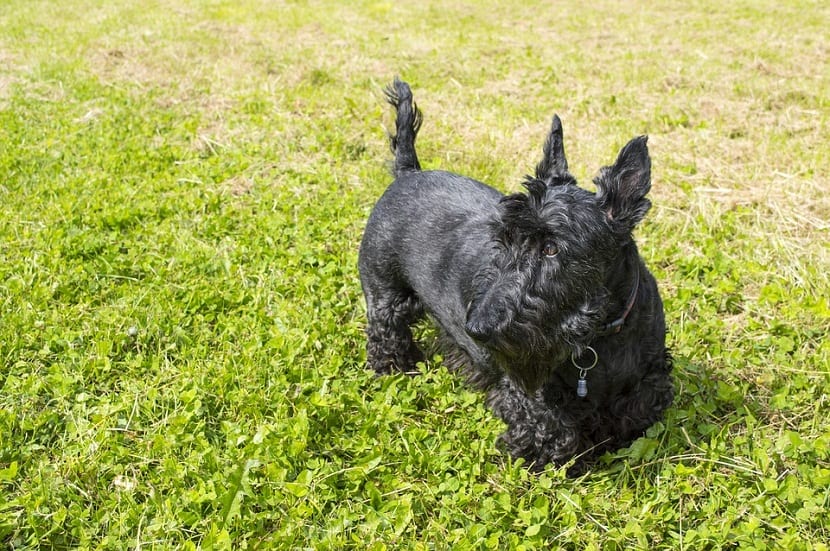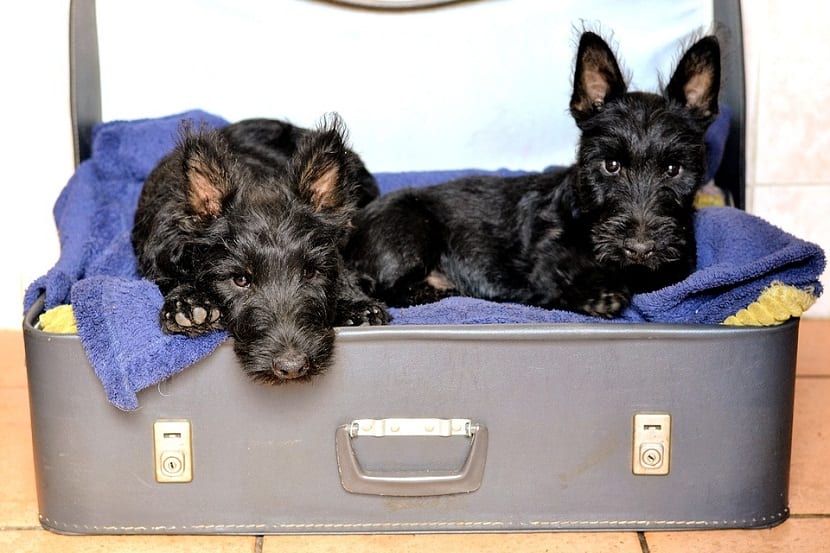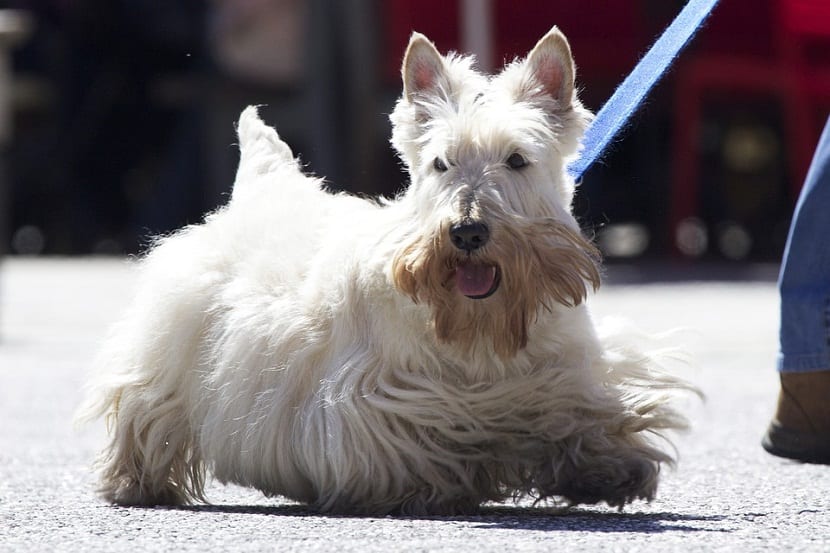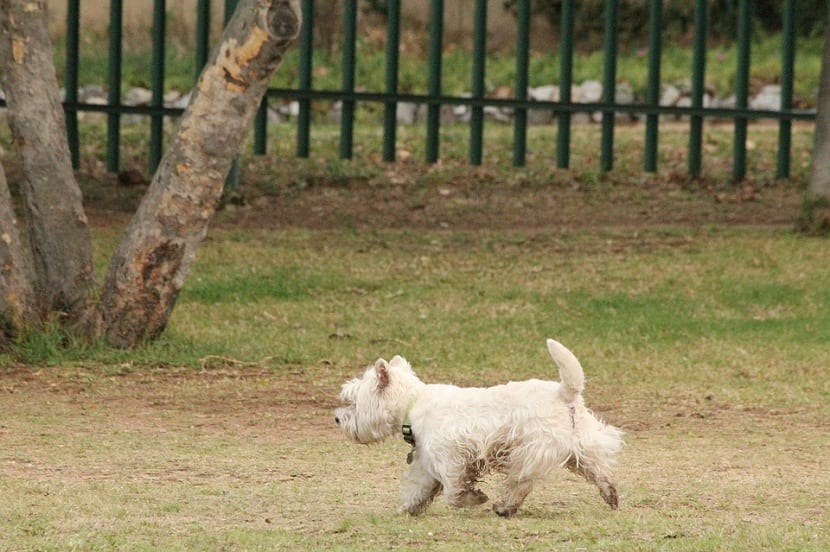
It is common to hear many small breed dogs named by the term terrier. Automatically is associated with a companion pet or lap dog cheerful, playful and brave character.
Actually this word refers to dogs that, due to their size, are excellent hunters of small prey, earth digging specialists, hence the word terrier.
From
These races originate from the highlands of Scotland that have been very popular since the XNUMXth century, each with particular and distinctive characteristics, referring to the Skye Terriers, among which are the so-called Cairn, Skye, Dinmont, Dandie and West Highland White Terrier.
Have specific knowledge about the origins, characteristics and recommendations To maintain the health and care of the pet is very important for the owners of these unique dogs.
With this information it will be easier to offer them a better life quality, educate them effectively and create bonds of affection and fidelity.
As stated above, the Scottish terrier is a dog native to the breeds of the highlands of Scotland. Among the names by which this dog is known are: Aberdeen terrier, Scottish terrier and Scottie.
This ancient breed dates back to the XNUMXth century. At that time, their ancestors with characteristics very similar to their modern relative, were already very similar in their physical appearance.
Like his race brothers, these pets were used to hunt small prey that stalked farms, like foxes, rabbits, and badgers. Like the Westie, the Scottish Terrier shares common ancestors with the Perthshire Blackmount and the Moor.
By the nineteenth century two types of Scottie were easily differentiated, a smooth-haired one known as an English terrier and another with thick fur called the Scottish terrier.
The purest breed was considered to be that of the Scotsman, but it was at the end of the 1888th century and in XNUMX to be exact, that defined the current parameters of the modern Scottish terrier.
Characteristics of the Scottish terrier
The most striking thing about the Scottie is its characteristic head that is in discordance with the rest of the body, but harmonic and symmetrical.
It gives you a realistic cartoon look, imposing airs, and stern dignity, all in a compact size. His body is very muscular, fast and resistant. Its alert posture is the most generalized image where you can see its prominent jaw, protruding chest and erect tail.
They measure approximately between 25 and 28 centimeters at the cross and they can weigh between 8 and 10 kilograms. The skull is long and the muzzle is the same size as the head. The eyes are wide, deep, with abundant eyebrows and dark in color.
The ears are small, erect, set apart and pointed. The neck and body together with the limbs are short and muscular. The tail is straight and pointed. The coat is double-layered, a thicker outer coat and a slightly softer inner coat. they can be black or wheat in color.

When it comes to temperament, this terrier is not as sociable as the other related breeds, in fact they are independent and quite serious. They are not the playful or patient type of pet, although they will always have a special bond with their owner and perhaps another adult. His relationship with children is normal, as long as both are educated in the treatment that should be had.
The pampering is not what characterizes it, has a loud, high-pitched barkTherefore, in addition to being a companion pet and hunter, it is also considered an alarm dog. They are recognized for their courage, tenacity and stubbornness, so it is recommended to educate them with patience, good treatment and firmness from puppies.
Predisposition to genetic diseases
With a life expectancy of between 11 and 13 years, the Scottie is generally in good health. We must always take care of them from all the risks that most dogs are prone to, such as parasites, fleas, ticks and mites.
Among the genetic diseases that this breed presents is craniomandibular osteopathy and Von Willebrand's disease. The first and as with the Westie occurs during the first year of the calf's life and is characterized by abnormal growth of the puppy's jaw. This will disappear by the age of twelve months, and is sometimes treated with palliative medications.
On the other hand, Von Willebrand disease is characterized by nosebleeds and difficulty in wound healing, something that means that special care is taken when it comes to surgery.
Although there are three types, the risk factor for the breed is in type I, which is the least complicated.
Hygiene and food care
Among the essential care that all pets must have, the first is to take him a minimum of twice a year to the vet for a routine check-up and keep him up to date with regard to the vaccines and dewormers.
Food is very important, since As it is a small breed, it must be fed with a feed suitable for its breed.
It should be ensured that the food contains the amount of nutrients necessary for its development and the proteins recommended for carnivorous animals, being preferable that the consumption of cereals is little. The veterinarian should be consulted about the incorporation of new foods and changes in the brand that is used.
With regard to hygiene, you should bathe every eight weeks and brush your hair regularly to avoid knots.
Products recommended for this type of dog should be purchased. It is very important to ensure that no traces of moisture are found after bathing. Visits to the hairdresser should be every six months in order to prevent the fur from reaching the ground, as it grows quickly.
Last it is very important to burn energy with one or two daily walksIn this way we will also avoid obesity, which is very counterproductive in the breed. Another option is to play with him to have fun, burn some calories, and bond.

